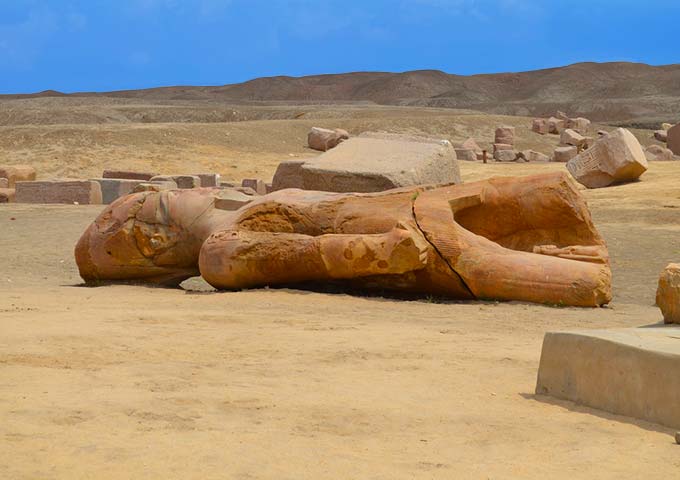Throughout history, Tanis has been known by many names. The ancient Egyptians called it Djanet and the Old Testament refers to the city as Zoan. Today the city is called San el Hagar, though most people know the area by its Greek name – Tanis.
The History of Tanis goes back to the 21st and 22nd Dynasties, when it was the northern capital of Egypt, ruled by the Tanite Kings of the Third Intermediate Period. This is a long period in Egyptian history of which very little is known, however during this period the country is known to have struggled with chronic instability and civil conflict.
Due to the city’s advantageous location on the Nile Delta the city prospered and became a wealthy commercial centre, long before the rise of Alexandria. However, as time moved on, so did the waters of the Nile and the Tanite branch simply silted up. By the Roman period Tanis had become a fairly minor settlement and the main temple had been plundered for its limestone. During the Byzantine period it became a small diocese, but during the Islamic period the city was finally abandoned and not resettled until the reign of Muhammad Ali Pasha (1805-1848).
Napoleon Bonaparte took an interest in the site of Tanis and had the area surveyed in the late 1700’s. 2 large pink granite sphinxes were taken from the site, which became part of the Louvre collection. Other statues were sent to St Petersburg, Berlin and Alexandria.
Auguste Mariette was the first to truly excavate the site and his work here lasted from 1860 to 1864. Whilst excavating the site, he discovered the famous Four Hundred Year Stela in addition to many royal statues. However, Mariette mistakenly identified the site as the Hyksos capital of Avaris. He also believed that the site could have been the location of Ramses II’s residence – Pi-Ramses.
In 1939, the French Egyptologist Pierre Montet made one of the greatest archaeological discoveries ever in Egypt, when he unearthed a royal tomb complex on the site of ancient Tanis, which included 3 intact burial chambers. The treasures yielded from these tombs included golden masks, bracelets, tableware, necklaces, silver coffins and elaborate sarcophagi. Had it not been for the breakout of World War II, these treasures would surely have been as well, if not better known that those found in the tomb of King Tutankhamun. Even today, few people know the story of Montet’s discoveries at Tanis and despite the treasures being on display in Cairo’s Egyptian Museum, they draw far fewer visitors than their more famous counterparts.Our guide will be able to point these exhibits out to you.
We offer visits to Tanis both as a day trip that can be added to many of our set tour itineraries, and also as a featured stop on some of our tours.













